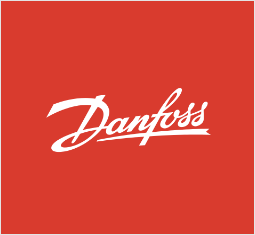Issue First SIRE 2.0 inspections challenge tanker crews
페이지 정보
작성자 최고관리자 댓글 0건 조회 1,067회 작성일 24-12-15 14:23본문
First SIRE 2.0 inspections challenge tanker crews

Of the 75 human factors related issues reported, one area stood out as particularly challenging for tanker crews: SIRE 2.0 Question 2.4.1 on defect management.
Findings from initial SIRE 2.0 inspections following the introduction of the updated vetting procedure in September suggest tanker operators are struggling to meet the additional requirements.
According to data from 26 vessel inspections, WiseStella, the Singapore-headquartered maritime learning and training provider, found a significant number of “negative observations” reported, mostly relating to deficiencies in human factors reporting and processes.
Across all the vessels inspected 204 areas scored low on SIRE 2.0 requirements relating to hardware (44), processes (78), and human factors related deficiencies (75).
Of the 75 human factors related issues, one area stood out as particularly challenging for tanker crews: SIRE 2.0 Question 2.4.1 on defect management.
WiseStella found that low scores were given because answers appeared to indicate crews did not know they had to create a requisition for spares when they became aware of defective equipment. Crews also scored low because they did not consider risk assessment after identifying defective equipment that could not be fixed immediately.
SIRE 2.0 reports also indicated that the responsible officer onboard some of the vessels inspected did not know how to produce a defect report according to the shipping company’s SMS procedures.
For instance, on three inspected vessels, there was no record of a defect report or risk assessment relating to faulty smoke detectors.
Ferhat Abul, WiseStella’s Managing Director and co-founder, said: “There are certain questions in SIRE 2.0 Chapter Two that appear to relate to hardware but in fact concern defect reporting. We found this to be a common misunderstanding and shows a lack of awareness about the associated risks of defective equipment, no matter how small.”
Failure to fully comprehend the aspects relating to the ship’s Safety Management System were also evident from low scoring inspections relating to SIRE 2.0 Chapter Five. Reports following inspectors’ questions about crew familiarity with enclosed space entry procedures – SIRE 2.0 Question 5.5.1 – identified a number of concerns.
“Inspectors commented on procedural gaps in SMS procedures, especially regarding entry into an enclosed space,” said Abul. “Water ballast tanks, especially on those ships fitted with electrolysis-based ballast water treatment systems, were particular problem areas with inspectors finding crew knowledge inadequate. Some crews did not know the allowable time between atmospheric condition checks and entering the tank.”
Low scoring inspections also related to Permits to Work, suggesting crews could end up allowing the wrong person to enter an enclosed space at the wrong time. Some entries also pointed to crews believing the same single permit could be issued for multiple tank entries.
One inspection found ship records indicating a single permit for entry into multiple water ballast tanks had been issued, with only one person entering each ballast tank instead of the two persons required by the permit and company procedures.
“The outcome of some SIRE 2.0 inspections does point to lack of familiarisation not only with regards to the new questions crews are required to answer, but also to a lack of knowledge of the processes and procedures relating to the shipping company’s Safety Management Manual,” he said.
Abul furthered that while the majority of the new questions are still directed at officers, there are now more ratings being interviewed, many of whom may not understand the question, acronym or terminology due to language and cultural differences.
“Proper SIRE 2.0 training and feedback is essential if crews are to better understand what is required of them and to safeguard against any safety lapses. SIRE 2.0 is such a major change. And this, combined with a high circulation of ratings means, many are unfamiliar with the safety management procedures, which differ from ship to ship, company to company.
The WiseStella SIRE 2.0 platform goes beyond what other providers offer. With an AI, data-driven approach to simplifying SIRE 2.0 requirements, WiseStella can better prepare crews and ship managers. But it’s much more than a SIRE 2.0 mock exam.
“WiseStella captures all published inspection data, then monitors and analyses that data to provide comprehensive, usable statistical information the global maritime industry can use to improve ship and crew safety. It provides insights with company and global-based benchmarks for its users. And once we have enough data, we will be able to compare the SMS performance of not just one ship but the fleet, the entire world fleet.”
■ Contact: WiseStella www.wisestella.io
- 이전글HD현대重, 직원들이 안전 위험요소 찾아 개선 24.12.15
- 다음글lomarlabs and Mythos AI Join Forces to Innovate Maritime Navigation 24.12.15












